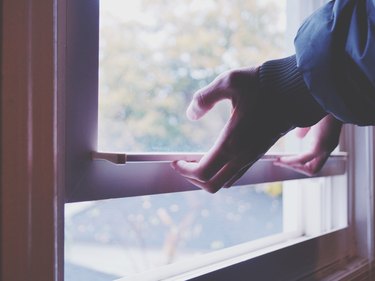Household mold is one of those terrible adult realities that you weren't thinking about when you were a kid wishing to grow up faster. It can cause a host of health problems and thousands (and thousands) of dollars in damage, and it can flourish in any home. Preventing mold damage is all about controlling moisture and responding quickly when you notice signs of mold growth. Focus on these 10 common mold sources.
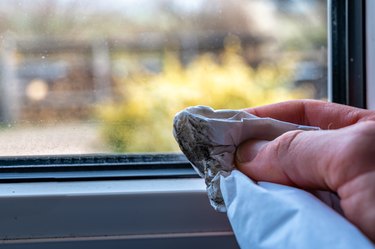
Video of the Day
Mold along a wall is a common indicator that there's water leaking somewhere behind the wall. Other signs that a pipe may be leaking behind a wall include a pervasive musty smell, damage to paint or wallpaper and an unexplained increase in your water bill. It's tough to prevent hidden water leaks, but calling a plumber as soon as you notice any signs of plumbing leaks can help you prevent further damage and the need for mold remediation.
Video of the Day
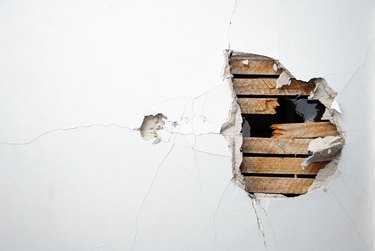
2. Neglected Leaks
You can't be expected to know that a pipe is leaking behind a wall, but if you're ignoring that occasional drip-drip-drip sound you hear coming from under your sink or from your roof, now's the time to address it. A "minor" leak that you neglect to fix can lead to water damage and a major mold problem later.

3. Wet Fabric
We've all been there: You stick a load of laundry in the washer and then get so distracted by a thousand other things that you forget to go back and move everything into the clothes dryer. A few days later, the clothes already smell like mildew. Don't let wet laundry sit around and don't keep spare clothing, blankets or other fabric items on a basement floor or in any area of your home that's prone to leaks or water problems.
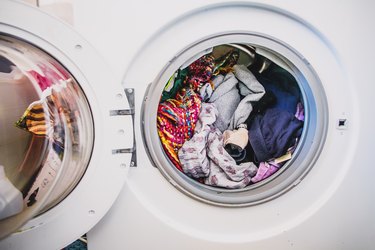
4. Steamy Bathrooms
A humid bathroom feels heavenly when you're enjoying a hot shower at the end of a long day, but long after you've dried off, your bathroom will still be steamy. Bathrooms and shower curtains are prime zones for mold growth because they tend to stay damp. Use exhaust fans, open windows and/or use dehumidifiers to keep bathrooms as dry as possible.

5. Dirty Vents and Ductwork
If you smell musty air coming from your vents, mold may be growing in the ductwork and/or around the vents themselves. Mold spores growing in the ducts will be blown into the rooms of your home when your HVAC system is turned on, so the ducts should be professionally cleaned. In the meantime, set up HEPA air purifiers and clean up vent covers with white vinegar to kill mold.

6. Humid Weather
If your home has a persistent mold problem, your location could be a factor. Homes in south Florida may have more mold issues than those in dry parts of Arizona simply because of humidity. While you can't do anything about the humidity outdoors, you can minimize mold growth and moisture problems by using dehumidifiers to keep the indoor humidity in your home at less than 60 percent.
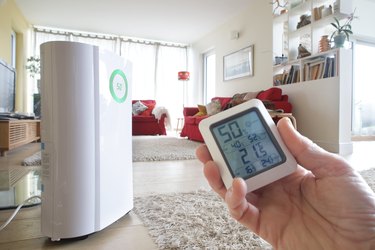
7. Basement Dampness
Basements and crawl spaces tend to be ground zero for mold growth because they tend to be the wettest part of the house. Feel all along the walls of your basement to see if you can detect any dampness. Basement waterproofing may help. If you notice dampness in just one area or after it has rained or snowed, go outside and investigate where your downspouts are pointing. They may need to be repositioned.
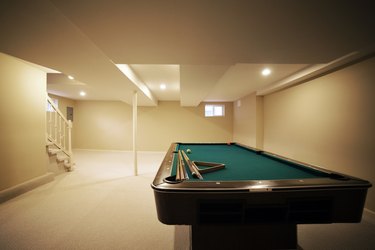
8. Standing Water
Any place in your home where water collects and can't drain creates an opportunity for mold to grow. If your toothbrush holder doesn't have drainage holes, for example, mold could start to grow and end up on (yikes) the thing you use to clean your mouth. Mold can grow in the water carafe of a coffee maker and even in houseplants that don't have adequate drainage.

9. Wet Carpets
A carpet that's wet today may be moldy by next week. Whether it's slightly damp from wet snow boots or totally soaked by a burst pipe, a wet rug needs to be dried right away to prevent mold growth. Press towels into a slightly damp spot and weigh them down with books to soak up as much moisture as possible. Using a wet vacuum and dehumidifiers may be enough to dry a saturated carpet before mold sets in, but ripping out the carpet is sometimes the only choice.

10. Stagnant Air
Your mother was right; fresh air really is good for you. If you keep your windows closed and vents sealed most of the time, you're not creating enough airflow to move humid air around. Stagnant air supports mold growth, so open windows when you can.
